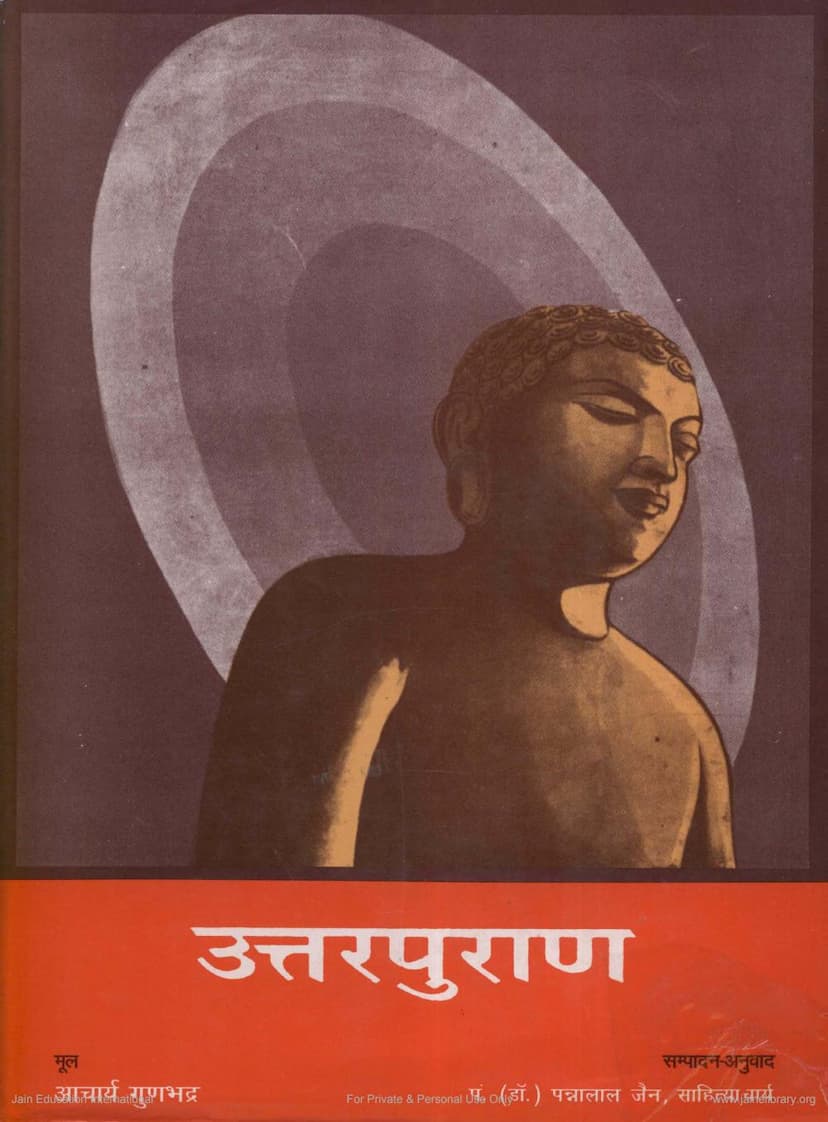Uttara Purana
Added to library: September 2, 2025

Summary
Here is a comprehensive summary of the Uttara Purana, based on the provided text:
Uttara Purana: A Summary
The Uttara Purana, authored by Acharya Gunabhadrasuri (9th century CE) and edited/translated by Dr. Pannalal Jain, is a crucial part of the Mahapurana, a monumental work in Jain literature. The Mahapurana itself, also known as Trisashthi-Lakshana-Mahapurana-Samgraha, is divided into two main parts: the Adi Purana and the Uttara Purana.
Content and Significance:
- Mahapurana's Scope: The Mahapurana narrates the lives of the 63 illustrious figures in Jainism, known as Shalaka Purushas. These include 24 Tirthankaras, 12 Chakravartins (universal emperors), 6 Balabhadras, 9 Narayanas, and 9 Pratinarayanas. The biographies detail not only their current lives but also their past births, illustrating their spiritual progress.
- Adi Purana: Composed primarily by Acharya Jinasena (with the remaining portion by his disciple Gunabhadra), the Adi Purana focuses on the lives of the first Tirthankara, Lord Rishabhadeva, and the first Chakravartin, Bharata, alongside Bahubali. It also delves into the origins and development of Indian culture and history.
- Uttara Purana: This part, authored by Acharya Gunabhadra, narrates the lives of the remaining 23 Tirthankaras, the other 11 Chakravartins, 9 Balabhadras, 9 Narayanas, and 9 Pratinarayanas, as well as the lives of various other important figures of that era. The Uttara Purana is generally more enumerative, listing the careers of these significant souls.
- Encyclopedic Nature: The narratives often serve as a backdrop for authors to introduce a wide range of traditional Jain topics. The work is rich with mythological, religious, dogmatic, ritualistic, and philosophical details, making it an almost encyclopedic repository of Jainism. It offers insights into the evolution of human society, ethical sermons, moral exhortations, and even details on statecraft and town planning.
- Literary Merit: The Uttara Purana, like the Mahapurana, is praised for its literary qualities and mastery of the Sanskrit language. It is considered a model for many subsequent Jain literary works in various languages.
Authorship and Context:
- Acharya Jinasena and Gunabhadra: These 9th-century CE scholars hold a unique place in Jain Sanskrit literature. Their Mahapurana is a significant treasure, admired for its depth of learning and scholarly rigor.
- Historical and Patronage Context: The work was composed during a period of political stability and academic fertility, with the Rashtrakuta kings like Jagattunga and Amoghavarsa being patrons of learning. Amoghavarsa, in particular, was a devotee of Jinasena and had academic and literary accomplishments.
- Completion of Mahapurana: Jinasena had completed the Adi Purana up to a certain point, and it was Gunabhadra who, after his teacher's passing, completed the Mahapurana, including the Uttara Purana. This intellectual lineage (Virasena -> Jinasena -> Gunabhadra) is significant for the comprehensive development of these vast works.
- Bharatiya Jnanpith Publication: The presented edition by Bharatiya Jnanpith is noted for its critical Sanskrit text, collation from multiple manuscripts, accurate Hindi translation, an exhaustive introduction, and indices, making it invaluable for scholars and religious readers alike.
In essence, the Uttara Purana is a foundational text in Jain tradition, meticulously detailing the lives and teachings of numerous spiritual and temporal leaders, providing a rich tapestry of Jain philosophy, history, and culture.